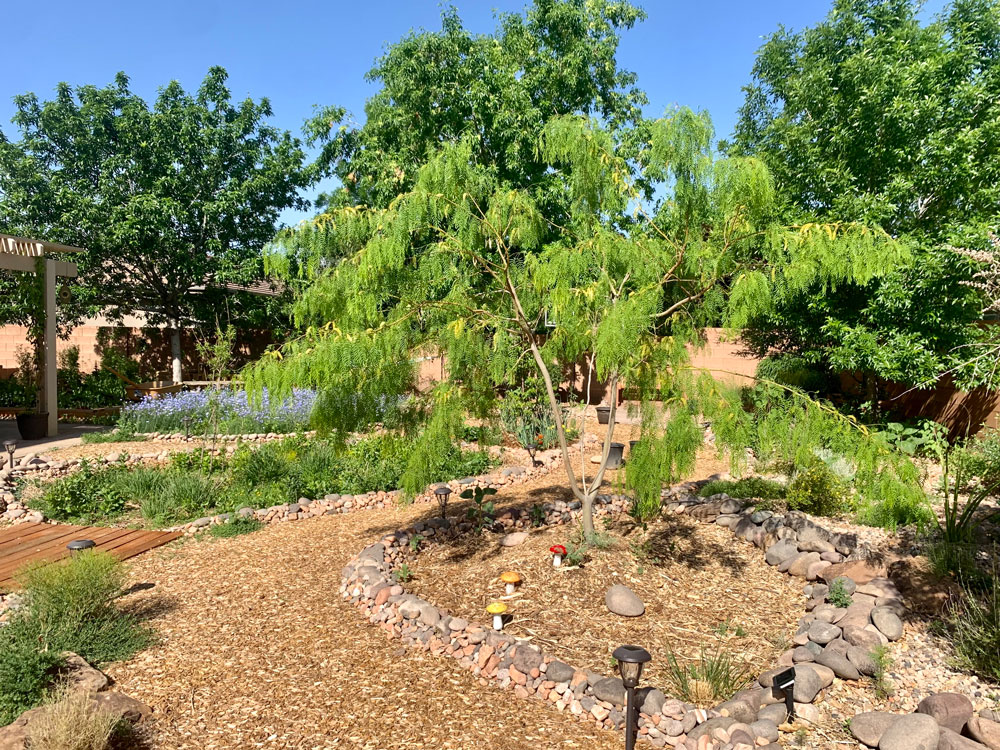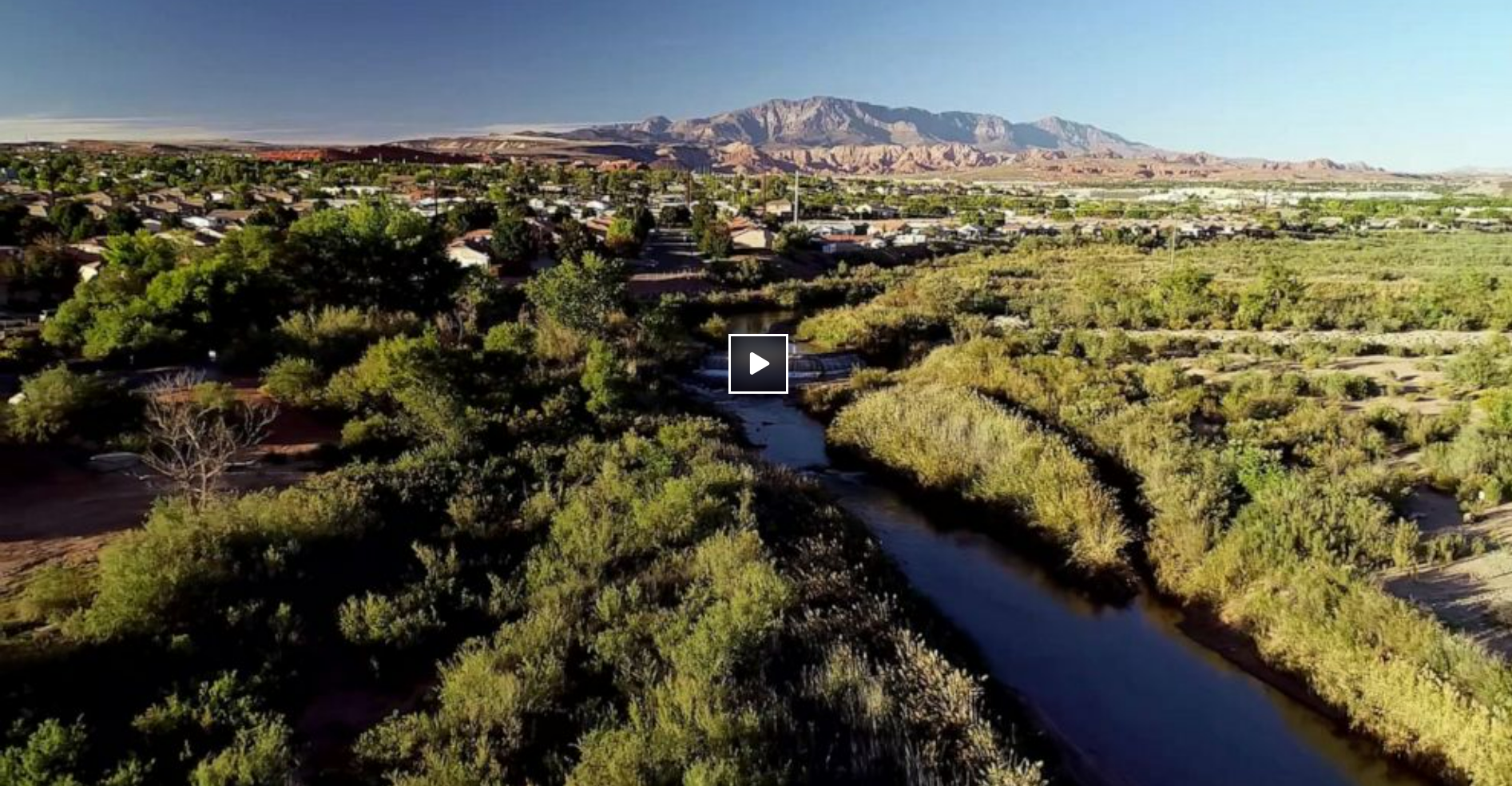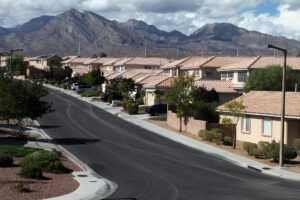
Landscaping with native plants not only conserves water but it supports riparian zones which are often damaged with new development. A xeriscaped landscape design can employ beautiful greenery and color.
CSU’s vision for both short-term and long-term regional water supply in Washington County is conservation first.
Proven water conservation methods will sustain our region’s required water supply for decades to come if we implement them now rather than later. Coupled with conservation is the need to price the true cost of the water we use so that economic market drivers force users to make informed decisions about their use. The last piece of the water puzzle is smart growth. The unbridled, “first place-in-the-nation” growth we are experiencing in Southwest Utah is not sustainable, strains our precious water supply, and threatens the “livability” of our beautiful home.
Together, conservation, price, and smart growth can drive down our total regional and county water use even as our populations grows.
Our Current Southwest Utah Water Predicament
We live in a desert here in Southwest Utah. Our region “enjoys” only about 10 inches of total precipitation annually, compared to the US national average of about 38 inches. Utah as a whole is the second driest state in the US based on many precipitation measures.
At the same time, we use water at a rate of about 275 gallons per capita per day (gpcd). Until recently, our region’s water usage exceeded 300 gpcd – triple the national average of 100 gpcd. By comparison, Las Vegas uses less than 110 gpcd in a climate that is on average 5-10 degrees warmer than Washington County. Phoenix and Tucson, with hotter, drier climates than Washington County, also achieve similarly low water use as Las Vegas. Melbourne, Australia, which also suffers from periodic, severe droughts, uses only 84 gpcd!
Water pricing is both the problem and the solution. Utah currently has some of the lowest water rates in the country. For over 150 years, Southwest Utah has had subsidized water rates that do not reflect the true cost to supply that water. The result has been wasteful water use practices that will be hard to break. Compared to other cities in the Southwest, Washington County has nearly the lowest minimum price for per gallon of water delivered. And except for Moab, it also has the least aggressive tiered pricing system for water deliveries.
Increasing water rates here will be difficult politically and require a sea change in public sentiment to implement. However, smart water pricing has been shown to be extremely effective in other places in the Western US in reducing overall water use. Better options for us include increasing overall water rates to reflect the actual cost of supply and using tiered rates above a minimum monthly water usage level as well as stiff surcharges on excessively high individual water users.
Lastly, there is the issue of smart growth. Washington County is the fastest growing county in the nation, according to the 2020 US Census. It has been near the top of fastest growing regions since 2000, at a rate of more than 4% population increase per year. Additionally, drawn by our beautiful, local, easily accessible nature and the proximity to all of Utah’s Mighty Five National Parks, 6 million visitors came to Washington County in 2021.
There have been multiple city and county “visioning” and planning efforts to manage growth smartly since the turn of the 21st century here, but they are soon forgotten once the ink is dry. In short, after 22 years of megadrought and bullish growth and development, we are in desperate need of a regional smart growth plan that is universally adopted, effective, and utilized methodically by the elected leaders, residents, businesses, and developers in our region.
What Our Future Southwest Utah Water Story Could Be
With the proper leadership from our elected leaders and support of a public that increasingly recognizes the need to conserve our precious water resources, it is time to build a water conserving culture like Las Vegas and our other bigger city neighbors in the Southwest. That is a culture where:
- It is a cultural norm for residences and businesses to conserve water whenever and wherever possible;
- The Washington County Water Conservancy District spends its money on true water conservation projects that capture, treat, and reuse water more than once;
- County and city elected officials enact water conservation ordinances and then actually enforce them;
- Future growth is a topic on which everyone who lives here provides input that is incorporated into plans that are actually implemented; and
- Our children are educated early on the principles of water conservation.
Only in these ways can we conserve our way to a livable region in Southwest Utah for a long time to come. The technology and practices already exist and are proven. Now it’s up to all of us to apply them for a successful, long-term outcome.



